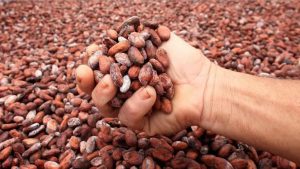
The cocoa bean, also called cacao bean, cocoa, and cacao, is the dried and fully fermented seed of Theobroma cacao, from which cocoa solids and, because of the seed’s fat, cocoa butter can be extracted.
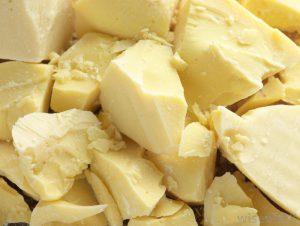

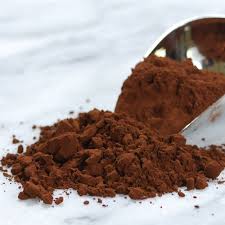
Cocoa Liquor- Chocolate liquor is pure cocoa mass in solid or semi-solid form. Like the cocoa beans from which it is produced, it contains both cocoa solids and cocoa butter in roughly equal proportion.
Cocoa Butter- Cocoa butter, also called theobroma oil, is a pale-yellow, edible vegetable fat extracted from the cocoa bean. It is used to make chocolate, as well as some ointments, toiletries, and pharmaceuticals. Cocoa butter has a cocoa flavor and aroma.
Cocoa Powder- Cocoa solids are a mixture of many substances remaining after cocoa butter is extracted from cacao beans. When sold as an end product, it may also be called cocoa powder or cocoa.
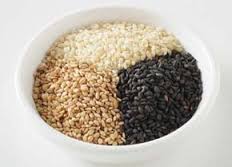
Sesame is a flowering plant in the genus Sesamum, also called benne. Numerous wild relatives occur in Africa and a smaller number in India. It is widely naturalized in tropical regions around the world and is cultivated for its edible seeds, which grow in pods or “buns”. The world harvested 6.2 million metric tonnes of sesame seeds in 2014, with Tanzania, India, and Sudan as the largest producers.
Sesame seed is one of the oldest oilseed crops known, domesticated well over 3000 years ago. Sesamum has many other species, most being wild and native to sub-Saharan Africa. Sesamum indicum, the cultivated type, originated in India and is tolerant to drought-like conditions, growing where other crops fail.
Sesame has one of the highest oil contents of any seed. With a rich, nutty flavor, it is a common ingredient in cuisines across the world. Like other nuts and foods, it can trigger allergic reactions in some people.
Sometimes sold with its seed coat removed (decorticated), this variety is often present on top of baked goods in many countries.
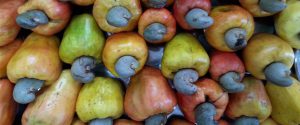
The cashew tree is a tropical evergreen tree that produces the cashew nut and the cashew apple. It can grow as high as 14m, but the dwarf cashew, growing up to 6m, has proved more profitable, with earlier maturity and higher yields.
The species is originally native to northeastern Brazil. Portuguese colonists in Brazil began exporting cashew nuts as early as the 1550s. Major production of cashews occurs in Vietnam, Nigeria, India, and Ivory Coast.
The cashew nut, often simply called a cashew, is widely consumed. It is eaten on its own, used in recipes, or processed into cashew cheese or cashew butter. The shell of the cashew seed yields derivatives that can be used in many applications including lubricants, waterproofing, paints, and arms production, starting in World War II. The cashew apple is a light reddish to yellow fruit, whose pulp can be processed into a sweet, astringent fruit drink or distilled into liquor.
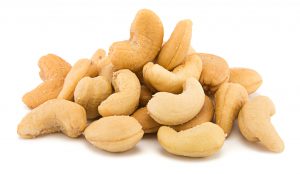
Cashew Kernel
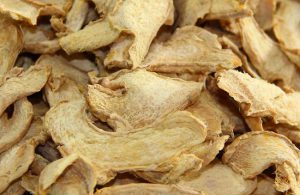
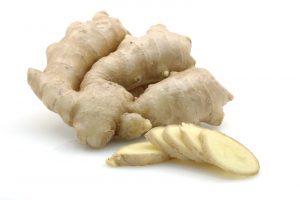
Ginger is a flowering plant whose rhizome, ginger root or simply ginger, is widely used as a spice or a folk medicine. It is a herbaceous perennial which grows annual stems about a meter tall bearing narrow green leaves and yellow flowers.
Ginger (Zingiber officinale) is a flowering plant whose rhizome, ginger root or simply ginger, is widely used as a spice or a folk medicine.
It is a herbaceous perennial which grows annual stems about a meter tall bearing narrow green leaves and yellow flowers. Ginger is in the family Zingiberaceae, to which also belong turmeric (Curcuma longa), cardamom (Elettaria cardamomum), and galangal. Ginger originated in the tropical rainforest in Southern Asia. Although ginger no longer grows wild, it is thought to have originated on the Indian subcontinent because the ginger plants grown in India show the largest amount of genetic variation. Ginger was exported to Europe via India in the first century AD as a result of the lucrative spice trade and was used extensively by the Romans.
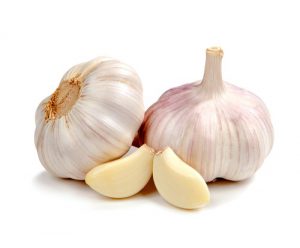
Garlic (scientific name Allium sativum) is a species in the onion genus, Allium.
Its close relatives include the onion, shallot, leek, chive, and Chinese onion. With a history of several thousand years of human consumption and use, garlic is native to Central Asia and northeastern Iran, and has long been a common seasoning worldwide. It was known to Ancient Egyptians, and has been used both as a food flavoring and as a traditional medicine.
Garlic grows in the wild in areas where it has become naturalized. The “wild garlic”, “crow garlic”, and “field garlic” of Britain are members of the species Allium ursinum, Allium vineale, and Allium oleraceum, respectively. Identification of the wild progenitor of common garlic is difficult, due to the sterility of its many cultivars which may all be descended from the species Allium longicuspis, which grows wild in central and southwestern Asia.
In North America, Allium vineale (known as “wild garlic” or “crow garlic”) and Allium canadense, known as “meadow garlic” or “wild garlic” and “wild onion”, are common weeds in fields. So-called elephant garlic is actually a wild leek (Allium ampeloprasum), and not a true garlic. Single clove garlic (also called pearl or solo garlic) originated in the Yunnan province of China.
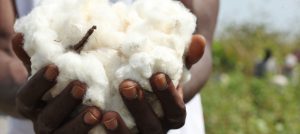
Cotton is a soft, fluffy staple fiber that grows in a boll, or protective case, around the seeds of the cotton plants of the genus Gossypium in the mallow family Malvaceae. The fiber is almost pure cellulose. Under natural conditions, the cotton bolls will increase the dispersal of the seeds.
The plant is a shrub native to tropical and subtropical regions around the world, including the Americas, Africa, and India. The greatest diversity of wild cotton species is found in Mexico, followed by Australia and Africa. Cotton was independently domesticated in the Old and New Worlds.
The fiber is most often spun into yarn or thread and used to make a soft, breathable textile. The use of cotton for fabric is known to date to prehistoric times; fragments of cotton fabric dated from 5000 BC have been excavated in Mexico and between 6000 BC and 5000 BC in the Indus Valley Civilization. Although cultivated since antiquity, it was the invention of the cotton gin that lowered the cost of production that led to its widespread use, and it is the most widely used natural fiber cloth in clothing today.
Current estimates for world production are about 25 million tonnes or 110 million bales annually, accounting for 2.5% of the world’s arable land. China is the world’s largest producer of cotton, but most of this is used domestically. The United States has been the largest exporter for many years. In the United States, cotton is usually measured in bales, which measure approximately 0.48 cubic meters (17 cubic feet) and weigh 226.8 kilograms (500 pounds)
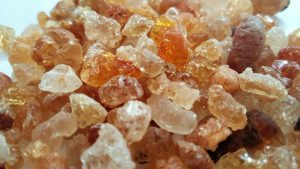
Gum arabic, also known as acacia gum, is a natural gum consisting of the hardened sap of various species of the acacia tree. Originally, gum arabic was collected from Acacia nilotica which was called the “gum arabic tree”; in the present day, gum arabic is predominantly collected from two related species, namely Acacia senegal[2] and Vachellia (Acacia) seyal. Producers harvest the gum commercially from wild trees, mostly in Sudan (80%) and throughout the Sahel, from Senegal to Somalia—though it is historically cultivated in Arabia and West Asia.
Gum arabic is a complex mixture of glycoproteins and polysaccharides. It is the original source of the sugars arabinose and ribose, both of which were first discovered and isolated from it, and are named after it.
Gum arabic is used primarily in the food industry as a stabilizer. It is edible and has E number E414. Gum arabic is a key ingredient in traditional lithography and is used in printing, paint production, glue, cosmetics and various industrial applications, including viscosity control in inks and in textile industries, though less expensive materials compete with it for many of these roles.
While gum arabic is now produced throughout the African Sahel, it is still harvested and used in the Middle East. For example, Arab populations use the natural gum to make a chilled, sweetened, and flavored gelato-like dessert
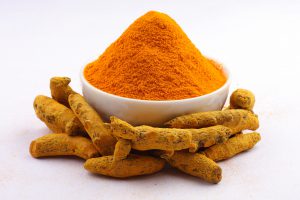
Turmeric is a rhizomatous herbaceous perennial plant (Curcuma longa) of the ginger family, Zingiberaceae. It is native to Southeast Asia, and requires temperatures between 20 and 30 °C (68 and 86 °F) and a considerable amount of annual rainfall to thrive. Plants are gathered annually for their rhizomes and propagated from some of those rhizomes in the following season.
When not used fresh, the rhizomes are boiled for about 30–45 minutes and then dried in hot ovens, after which they are ground into a deep-orange-yellow powder commonly used as a coloring and flavoring agent in the cuisines of Bangladesh, India, Indonesia, Iran, and Pakistan, especially for curries, as well as for dyeing.
Although long-used in Ayurvedic medicine to treat various diseases, there is little high-quality clinical evidence for use of turmeric or its main constituent, curcumin, as a therapy
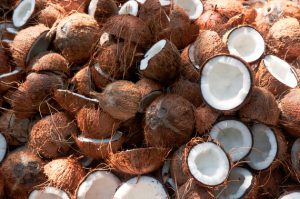
The coconut tree (Cocos nucifera) is a member of the family Arecaceae (palm family) and the only species of the genus Cocos. The term coconut can refer to the whole coconut palm or the seed, or the fruit, which, botanically, is a drupe, not a nut. The spelling cocoanut is an archaic form of the word. The term is derived from the 16th-century Portuguese and Spanish word coco meaning “head” or “skull”, from the three indentations on the coconut shell that resemble facial features.
Coconuts are known for their great versatility, as evidenced by many traditional uses, ranging from food to cosmetics. They form a regular part of the diets of many people in the tropics and subtropics. Coconuts are distinct from other fruits for their large quantity of water (also called “juice”) and when immature, they are known as tender-nuts or jelly-nuts and may be harvested for their potable coconut water. When mature, they can be used as seed nuts or processed to give oil from the kernel, charcoal from the hard shell, and coir from the fibrous husk. The endosperm is initially in its nuclear phase suspended within the coconut water. As development continues, cellular layers of endosperm deposit along the walls of the coconut, becoming the edible coconut “flesh”. When dried, the coconut flesh is called copra.
The oil and milk derived from it are commonly used in cooking and frying, as well as in soaps and cosmetics. The husks and leaves can be used as material to make a variety of products for furnishing and decorating. The coconut also has cultural and religious significance in certain societies, particularly in India, where it is used in Hindu rituals.
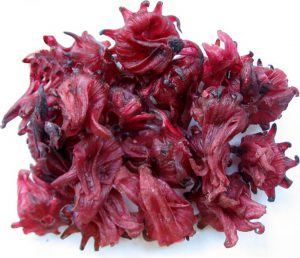
Hibiscus is a genus of flowering plants in the mallow family, Malvaceae. The genus is quite large, comprising several hundred species that are native to warm-temperate, subtropical and tropical regions throughout the world. Member species are renowned for their large, showy flowers and are commonly known simply as hibiscus, or less widely known as rose mallow.
The genus includes both annual and perennial herbaceous plants, as well as woody shrubs and small trees. The generic name is derived from the Greek word? (hibískos), which was the name Pedanius Dioscorides (c. 40–90) gave to Althaea officinalis.
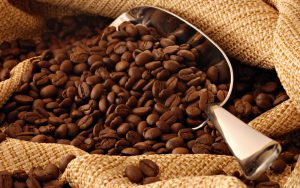
A coffee seed, commonly called coffee bean, is a seed of the coffee plant, and is the source for coffee. It is the pit inside the red or purple fruit often referred to as a cherry. Just like ordinary cherries, the coffee fruit is also a so-called stone fruit. Even though the coffee beans are seeds, they are referred to as “beans” because of their resemblance to true beans. The fruits – coffee cherries or coffee berries – most commonly contain two stones with their flat sides together. A small percentage of cherries contain a single seed, instead of the usual two. This is called a “peaberry”. The peaberry occurs only between 10 and 15% of the time, and it is a fairly common (yet scientifically unproven) belief that they have more flavour than normal coffee beans. Like Brazil nuts (a seed) and white rice, coffee beans consist mostly of endosperm.
The two most economically important varieties of coffee plant are the Arabica and the Robusta; 75–80% of the coffee produced worldwide is Arabica and 20% is Robusta. Arabica beans consist of 0.8–1.4% caffeine and Robusta beans consist of 1.7–4% caffeine. As coffee is one of the world’s most widely consumed beverages, coffee beans are a major cash crop and an important export product, counting for over 50% of some developing nations’ foreign exchange earnings.
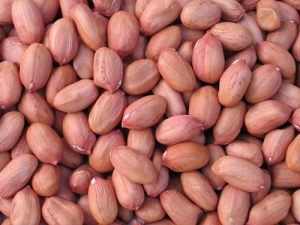
The peanut, also known as the groundnut and the goober and taxonomically classified as Arachis hypogaea, is a legume crop grown mainly for its edible seeds. It is widely grown in the tropics and subtropics, being important to both small and large commercial producers. It is classified as both a grain legume and, because of its high oil content, an oil crop. World annual production of shelled peanuts was 42 million tonnes in 2014. Atypically among crop plants, peanut pods develop underground rather than aboveground. It is this characteristic that the botanist Linnaeus used to assign the specific name hypogaea, which means “under the earth.”
As a legume, the peanut belongs to the botanical family Fabaceae; this is also known as Leguminosae, and commonly known as the bean, or pea, family.[1] Like most other legumes, peanuts harbor symbiotic nitrogen-fixing bacteria in root nodules. This capacity to fix nitrogen means peanuts require less nitrogen-containing fertilizer and improve soil fertility, making them valuable in crop rotations.
Peanuts are similar in taste and nutritional profile to tree nuts such as walnuts and almonds, and are often served in similar ways in Western cuisines. The botanical definition of a “nut” is a fruit whose ovary wall becomes very hard at maturity. Using this criterion, the peanut is not a true nut, but rather a legume. However, for culinary purposes and in common English language usage, peanuts are usually referred to as nuts.
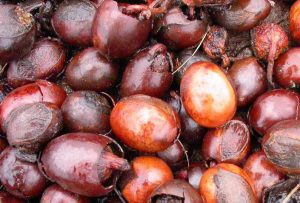
Shea butter is composed of five principal fatty acids: palmitic, stearic, oleic, linoleic, and arachidic (see Table below). About 85 to 90% of the fatty acid composition is stearic and oleic acids. The relative proportion of these two fatty acids affects shea butter consistency. The stearic acid gives it a solid consistency, while the oleic acid influences how soft or hard the shea butter is, depending on ambient temperature.
The proportions of stearic and oleic acids in the shea kernels and butter differ across the distribution range of the species. Ugandan shea butter has consistently high oleic acid content, and is liquid at warm ambient temperatures. It fractionizes into liquid and solid phases, and is the source of liquid shea oil.
The fatty acid proportion of West African shea butter is much more variable than Ugandan shea butter, with an oleic content of 37 to 55%. Variability can be high even locally, and a tree that produces hard butter can grow with one that produces soft butter. Nuts are gathered from a wide area for local production, so shea butter consistency is determined by the average fatty acid profile of the population.
Within West Africa, shea butter from the Mossi Plateau region of Burkina Faso has a higher average stearic acid content, and so is usually harder than shea butter from other West African regions.
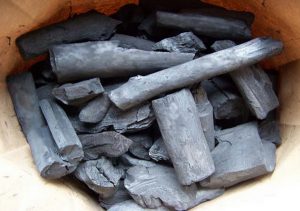
Charcoal is mostly pure carbon, called char, made by cooking wood in a low oxygen environment, a process that can take days and burns off volatile compounds such as water, methane, hydrogen, and tar.
Historically, the production of wood charcoal in locations where there is an abundance of wood dates back to a very ancient period, and generally consists of piling billets of wood on their ends so as to form a conical pile, openings being left at the bottom to admit air, with a central shaft to serve as a flue. The whole pile is covered with turf or moistened clay.
The firing is begun at the bottom of the flue, and gradually spreads outwards and upwards.
The success of the operation depends upon the rate of the combustion. Under average conditions, 100 parts of wood yield about 60 parts by volume, or 25 parts by weight, of charcoal; small-scale production on the spot often yields only about 50%, while large-scale became efficient to about 90% even by the seventeenth century.
The operation is so delicate that it was generally left to colliers (professional charcoal burners). They often lived alone in small huts in order to tend their wood piles. For example, in the Harz Mountains of Germany, charcoal burners lived in conical huts called Köten which are still much in evidence today.